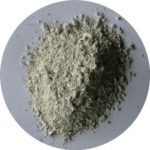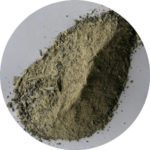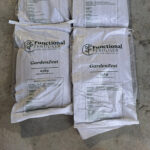PW Burton
The official advice has been to arrange calving in July, in order to maximise milk harvest before the end of December. This points up a lack of faith in summer pasture production.
Yet by discounting the value of summer growth, the potential available from one third of the lactation period is largely ignored. But long term growth figures from the major dairying areas (with perhaps the exception of Canterbury) do not support the concept of unreliable and slow summer growth.
Summer pasture production can be variable due to excess heat and lack of moisture however management practices often have the biggest impact. A lack of appreciation of summer growth potential by many famers means a large chunk of low-cost production is possibly being squandered.
Maximising the potential of mid-season pasture is a case of working with reliable local measures. High fertility grasses go from vegetative to reproductive mode as soon as soil temperatures reach 20°C. In the Waikato, coastal Bay of Plenty, Taranaki, and Manawatu this happens the first week in November every year. Doubtless it’s a combination of factors, however the timing has been the same for at least the last 30 years.
With increased stalk and seed head, grasses, particularly annuals, are less digestible and stock intake reduces, with production declining accordingly. Clover, on the other hand, thrives in warmer temperatures and, being highly digestible as well as containing three to four times the calcium of grasses, it’s the ideal feed for maintaining milksolid production.
Clover dominant pasture also maintains quality for a longer period, allowing the ideal 30-day grazing interval to be maintained from late December until autumn rain arrives, when the interval can be further lengthened.
Pasture growth figures from two properties in the Edgecumbe region during the 08 – 09 season highlighted the difference between a conventionally fertilised property where 235 kg N/ha was applied, and a property using Functional Fertiliser’s total nutrient programme applying 25kgN/ha.
Functional Fertiliser programmes include higher calcium inputs to help create the conditions that favour vigorous clover growth, along with required phosphorus, sulphur, potassium, and magnesium inputs.
Although the Functional Fertiliser property grew a little less pasture in late winter and early spring, over Nov, Dec, and January it grew on average 62.5kg DM/ha day, 74% more than the 35.8kg DM/ha for the conventionally fertilised property.
Over the following three months of February, March, and April the Functional Fertiliser property grew an average of 44.8kg DM/ha, 55% more than the 28.8kg DM/ha for the conventional property.
For the six months from the first of November through until the 30th April the difference in pasture production was a substantial 3,869kgDM/ha, or an average 21.3kgDM/ha of extra high quality milking tucker per day.
For the season from I June 08 – 31 May 09 the Functional Fertiliser property grew a total of
16,187kg DM/ha, compared to the conventionally fertilised property’s 12,895kg DM/ha.
During last season (15 – 16) the growth difference between the two properties had widened to over 7,000kg DM/ha, with the conventionally fertilised property anchored at a similar level to the earlier year, and the Functional Fertiliser property growing 20,600kg DM/ha.
So before dismissing the guy in the district busily making hay over summer as “under stocked”, give thought to the possibility that his animals may be producing significantly more milk each than those on neighbouring ‘conventional’ farms, due to their consumption of high quality clover-rich pasture, and he was using his ‘surplus’ for winter supplement.
His costs will also be less, as the requirement for fertiliser nitrogen is negligible as it’s being fixed free of charge by clover, and he farms with comfort of knowing his feed supply over summer is largely guaranteed.
The change to a Functional Fertiliser programme is surprisingly seamless, and October is the ideal time to make a conversion to a programme that is rapidly gaining the reputation as the future of pastoral farming.
For more information call Peter on 0800 843 809.




